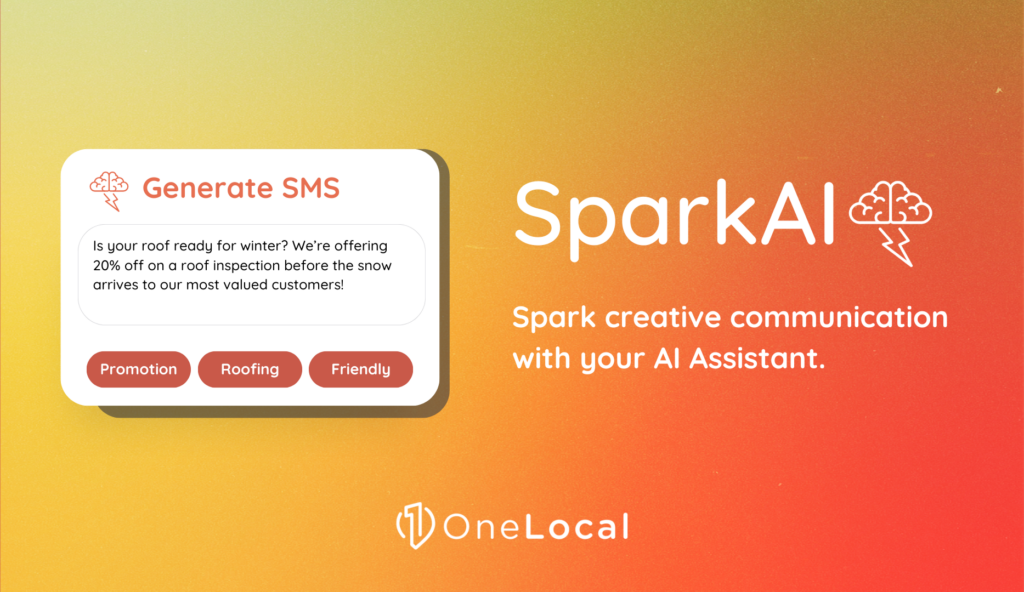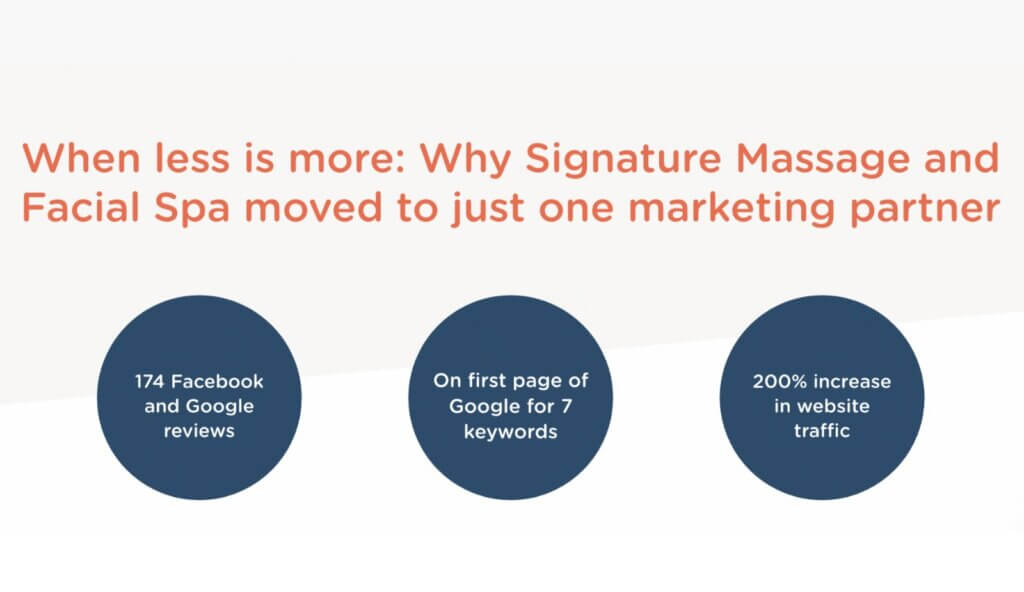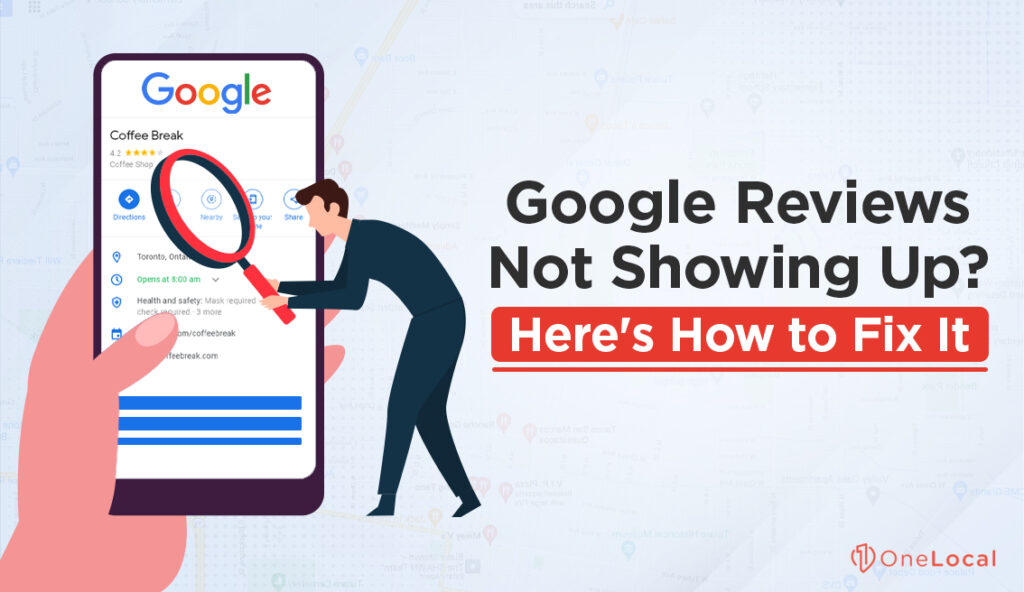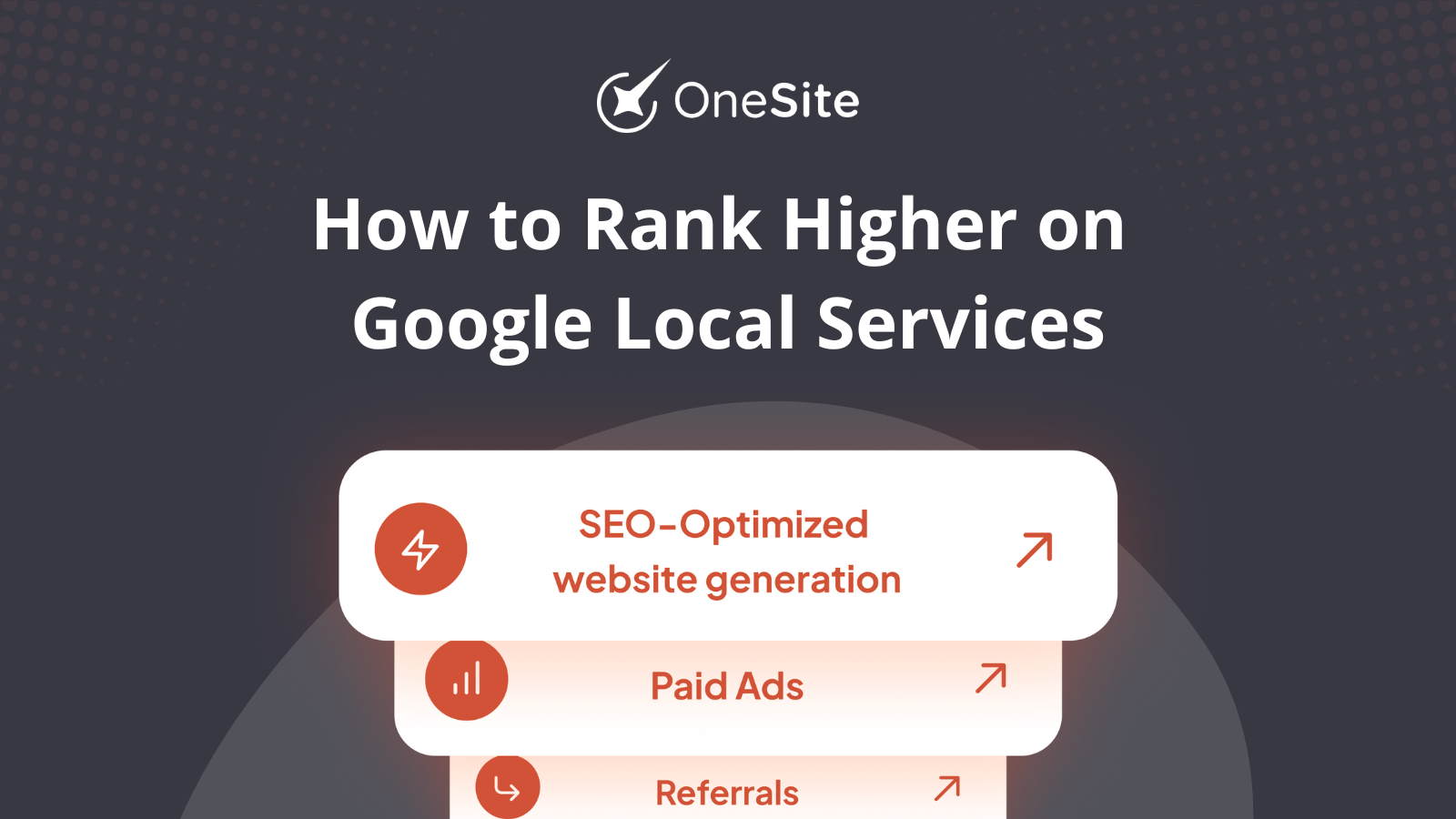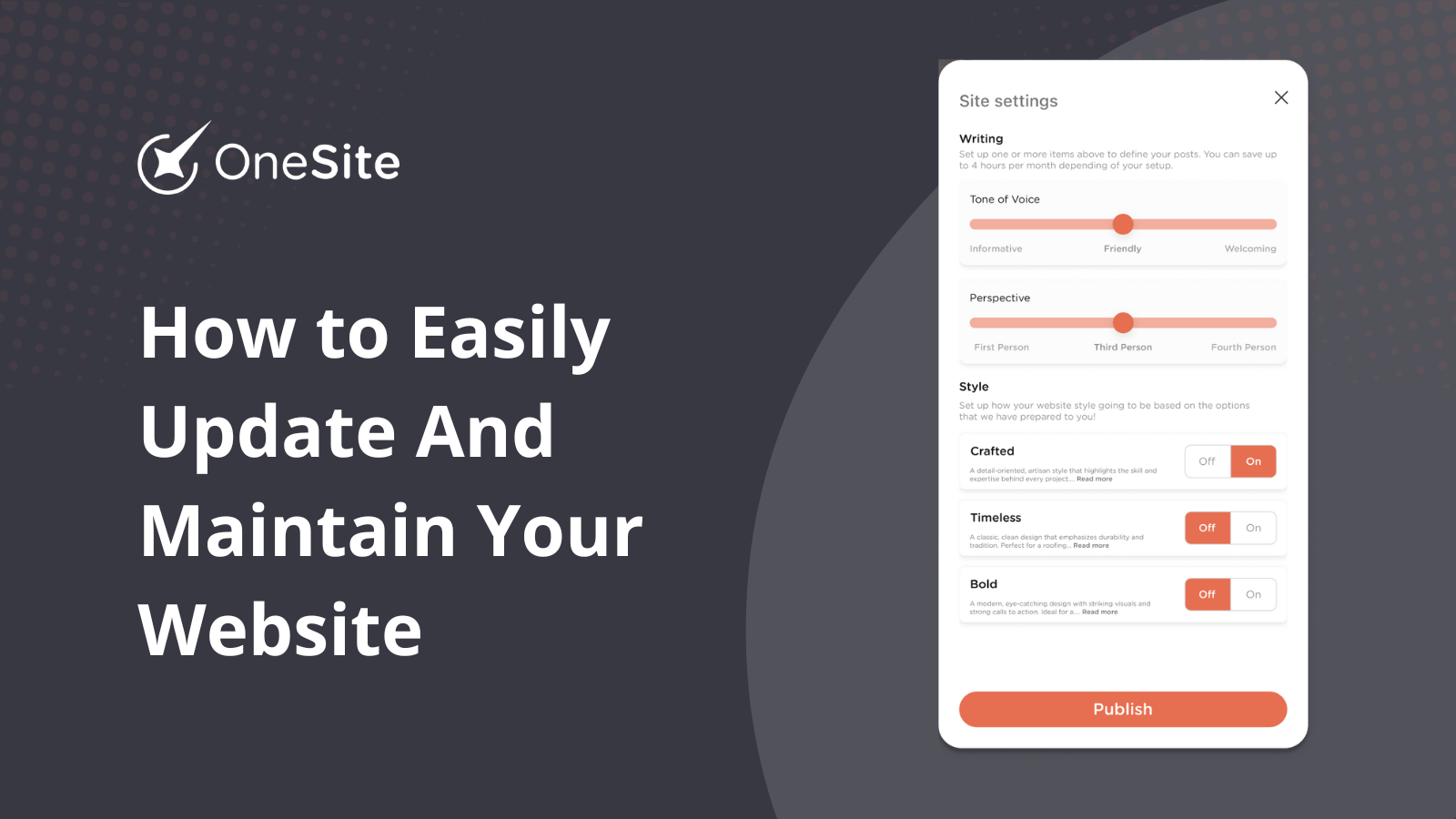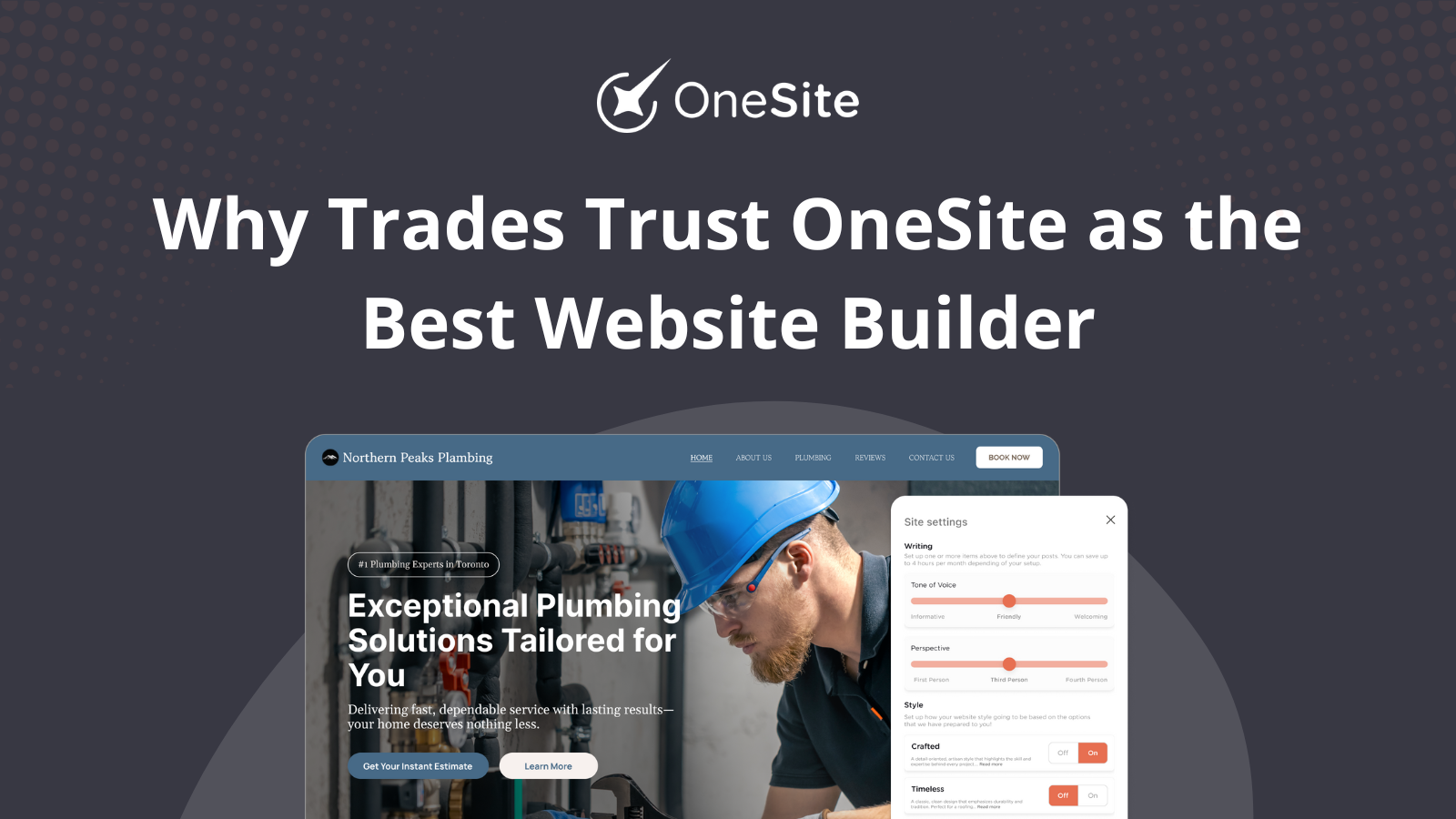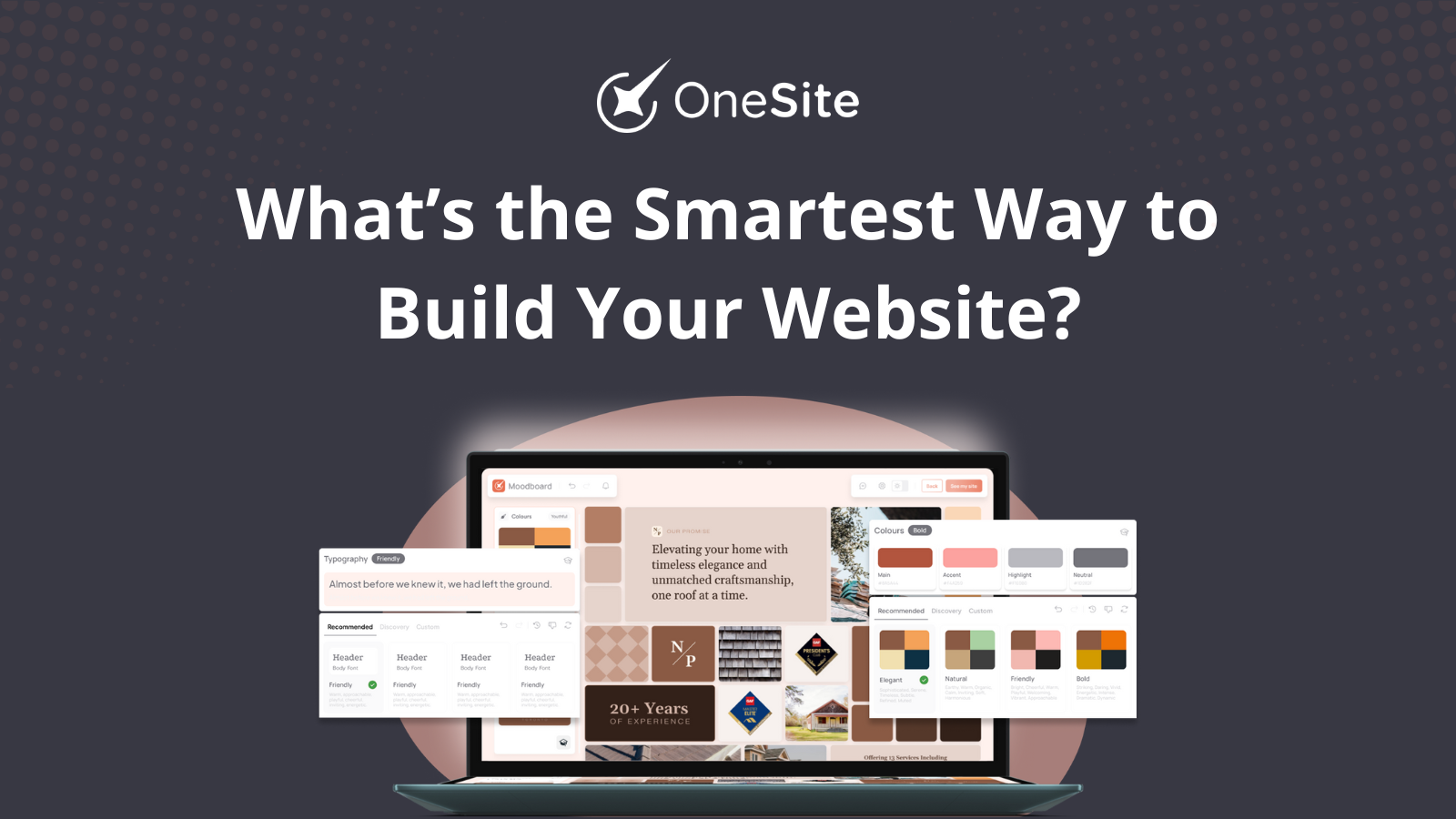If you run a service business (whether it’s plumbing, roofing, electrical, HVAC, landscaping or just about any local trade) your next customer is probably already searching for you on Google. Every day, people type in phrases like “emergency HVAC near me” or “best roofing contractor in [city]” when they’re ready to hire. If your business doesn’t show up in those results, you’re not just missing traffic, you’re missing qualified, high-intent leads ready to convert.
Want to know how to rank higher on Google local services? It starts with visibility — and that begins with getting listed, optimized, and continually updated.
Picture this: a homeowner wakes up to a burst pipe at 7 a.m. They don’t dig through old business cards or ask a neighbor. They grab their phone, search “plumber near me,” and call one of the top results. That’s how decisions are made now. Even word-of-mouth referrals often turn into a quick Google search before someone picks up the phone. If your business isn’t showing up, you’re missing out on real opportunities.
Here’s the good news: you don’t need to hire a pricey agency to compete. With the right setup and a few key best practices, your business can rise in local search results, stand out from the competition, and bring in more customers from your area.
In this guide, we’ll break down what actually drives local rankings, why so many websites miss the mark, and how OneSite simplifies the entire process, automating what matters so you can focus on delivering great service.
What Drives Local Rankings on Google (and How to Rank Higher on Google For Local Services)
Google’s local search results are influenced by a mix of factors, including relevance, distance, and prominence. In reality, there are dozens of individual ranking signals that feed into how your business shows up online — from page speed to backlinks to mobile usability. (If you’re curious, Search Engine Land’s Periodic Table of SEO Elements offers a full breakdown).
But if you’re a local service business, you don’t need to master every piece. This guide focuses on the SEO elements that have the biggest real-world impact for small businesses: the ones that help you get found by nearby customers who are ready to book.
That’s where local SEO comes in. Unlike traditional SEO that targets national keywords, local SEO helps you show up for nearby customers (the ones most likely to call or book). And for many service businesses, learning how to rank higher on Google Local Services is just as important, especially if you want to capture top placement in Google’s high-trust service listings and map results.
Here’s a quick statistic to consider: According to Google, 76% of people who search for something nearby on their smartphones visit a business within a day. Appearing in those searches isn’t optional; it’s essential.
There are two major places your business needs to appear: the Google local map pack (those top 3 listings under the map), and the regular organic search results. Both require strong local SEO signals, which we’ll walk through below.
NAP Consistency (Name, Address, Phone)
A key factor in how to improve your local ranking on Google is maintaining consistent business information — your name, address, and phone number (NAP). Google scans this data across your website, directory listings, your Google Business Profile, and more.
Inconsistent NAP listings can confuse search engines. For example, if one directory lists your business as “Smith’s Plumbing” and another says “Smith Plumbing & Heating,” Google may treat them as two separate entities. That weakens your credibility and hurts your ranking.
With OneSite, this is handled automatically. Your NAP is synced across key platforms and kept consistent—one of the simplest, most effective ways to rank locally on Google.
Google Business Profile
Still asking, “How do I list my business on Google?” The answer starts here. Your Google Business Profile (formerly Google My Business) is what powers your visibility on Google Maps and in the local pack — those three top listings that appear before regular search results.
To compete here, your profile needs to be complete and well-maintained. That includes:
- Choosing the right primary and secondary business categories (e.g., Roofer vs. General Contractor).
- Writing a clear, keyword-rich and strategic description.
- Setting your service areas.
- Uploading real photos of your work (before/after shots, branded vehicles, team photos).
- Keeping your hours accurate and up to date.
Engaging with reviews, adding new photos, and updating seasonal hours all send signals to Google that your business is active, reliable, and relevant.
Reviews (and Responses)
Online reviews influence both human behavior and search rankings. Google uses them as a signal of trust and quality — especially when reviews are recent, mention specific services, or include your city or service area.
If you’re not actively asking for reviews, then you’re missing out on a key opportunity for growth. The most successful local businesses incorporate review requests into their process and respond to every review, whether positive or negative. This builds trust with customers and shows Google that you’re engaged.
A tip: reviews that mention your service and your city (like “Great roof repair in Denver!”) can help you rank for those keywords. OneSite prompts customers to leave reviews at just the right moment in the journey, no guesswork required.
Schema Markup
How do I list my services on Google so they stand out? Schema is a big part of that. It is a technical tool that helps Google understand your website’s content more clearly. It’s a type of code that defines important details (like your business type, service areas, hours, and customer ratings) so search engines can parse them accurately.
Schema doesn’t change how your site looks to visitors, but it can improve how your site appears in search results — enabling features like rich snippets (star ratings, service highlights, FAQs) and boosting your visibility in the map pack.
While it’s complex to set up manually, OneSite includes structured data by default, giving you the technical SEO edge without needing to lift a finger.
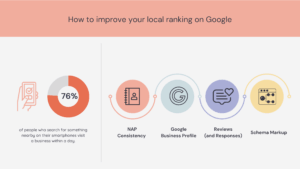
Why Most DIY Sites Don’t Help You Rank Higher on Google Local Services
Many business owners start with popular website builders because they’re quick, affordable, and promise easy setup. But most of these tools aren’t built for local search, and that’s where they fall behind.
They often miss:
- Built-in support for local keyword targeting.
- SEO settings that account for service area optimization.
- Guidance on structuring service pages for each city or region.
- Technical SEO tools like schema or sitemap management.
The result? A decent-looking website that doesn’t generate leads. It may be mobile-responsive, but without the right SEO signals (especially local ones), Google won’t know when or where to show it. That leaves you invisible at the exact moment potential customers are looking for your service.
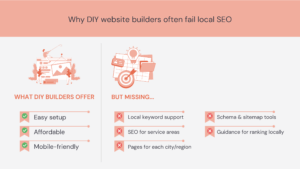
How to Get Listed on Google Search with OneSite’s Built-In Local SEO
Instead of guessing how to get listed on Google search or paying for technical help, OneSite gives you a complete solution. From the start, it structures your site for local relevance:
- Local keywords tailored to your services and area.
- Page structures that reflect real search behavior in your city.
- Proper use of headings, meta tags, and URLs to send the right signals to Google.
- Geolocation signals that connect your business to the neighborhoods and cities you serve.
- Structured data, mobile optimization, fast load times, and clean URLs — all built in.
- Built-in local SEO guidance that automatically aligns your content with best practices.
- Real-time competitor monitoring to track what’s changing in your market.
- Continuous smart updates that adjust your site as search trends evolve.
- Effortless AI-powered changes that recommend or implement optimizations without extra work.
If you’re wondering, “how to rank higher on google local services?” OneSite will ensure you’re not falling behind. Before building your site, OneSite gathers insights from your current website, your Google Business Profile, your local competitors’ sites, and your brand mood board. Then, it analyzes what’s working in your area and tailors your site structure, titles, and descriptions based on that data.
Your Google Business Profile is part of the setup, and schema markup is automatically applied to reinforce your location and service type. You don’t have to write code or learn SEO — you just get a high-performing site that brings in leads and stays visible.
Stay Ahead With Continuous, AI-Driven Recommendations
Search rankings aren’t fixed. Your competitors evolve, and Google constantly updates its algorithm — sometimes thousands of times per year. That’s why OneSite includes smart, AI-powered tools that help you adapt.
The platform monitors your rankings, tracks shifts in local search trends, and recommends simple updates that keep your business visible. If a competitor adds a new service, OneSite might recommend you do the same. If a new keyword trend emerges, it flags it with steps like updating a headline or creating a new service page.
This is real, automated optimization tailored to your market. No guesswork. No hiring outside help. Just regular improvements that help your business stay competitive.
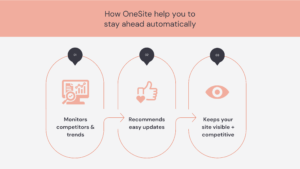
What Local SEO Looks Like in Real Life
Let’s say you run a roofing company in Denver. Your ideal customers are searching for terms like “roof repair in Denver,” “storm damage roof estimate,” or “emergency roofer near me.”
OneSite uses AI to identify high-value local search terms in your area and automatically builds your site to target them. Your service pages are organized by location and offering, your content reflects real search behavior, and every technical detail is optimized behind the scenes.
Schema markup connects your site to local signals. Your Google Business Profile supports your presence in the map pack. And AI keeps your site aligned with what’s working in the market.
As a result, you start appearing more often in Google Maps and on the first page of organic results — right when people are looking for help. You didn’t have to learn SEO, you just got a system that works.
This applies across industries: electricians in Dallas, landscapers in Boise, HVAC techs in Tampa. The same principles apply, and OneSite adapts to each local market. You don’t have to wonder “How do I edit a Google local listing?” or figure out how to rank higher on Google local services, OneSite does it for you.
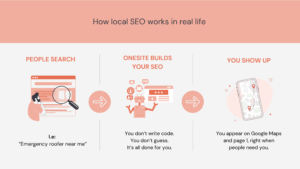
The Real Cost of Being Invisible Online
If your business isn’t showing up when customers search, the cost isn’t abstract. You’re losing jobs — and handing them to competitors. Even a small bump in visibility can mean dozens more calls per month, and thousands in additional revenue.
Word-of-mouth still matters, but today’s referrals often end with a Google search. And if you’re not at the top, someone else is.
How to Spot SEO Red Flags in Your Current Website
Think your current site might be holding you back? Here are a few quick signs:
- Your site doesn’t mention your city or service area more than once.
- Your Google Business Profile isn’t linked from your homepage.
- You don’t have separate pages for each key service or location.
- Your site takes more than 3 seconds to load.
- You haven’t touched the site in months.
If you recognize these, you’re not alone. Most business owners don’t have the time or tools to stay on top of SEO. That’s why OneSite was built to do it for you.
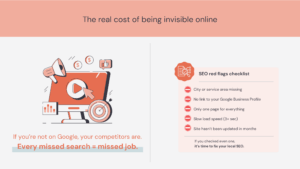
Ready to Rank Higher on Google Local Services? Let’s Get You Found
Local SEO isn’t just another marketing tactic, it’s the engine behind consistent, qualified leads for nearly every service business. Whether you’re a one-person operation or a growing team, your online visibility determines whether you get found or passed over.
The good news is you don’t have to become an expert or hire an expensive agency to get results. With the right foundation and ongoing optimization, you can climb local rankings, win new customers, and build a business that grows — without wasting time or overspending.
You don’t need more complexity, you need to get found. OneSite was built for that. Let’s get your business where it belongs: at the top of local search results. Book a demo!
Frequently Asked Questions
How to get listed on Google Search?
To get listed on Google Search, the first step is to create and verify your Google Business Profile. This free listing helps your business appear in local search results and Google Maps. If you’re wondering how to get listed on Google Search effectively, the key is to ensure your profile is complete, accurate, and aligned with what people are searching for in your area. A well-structured website that reinforces your location and services also improves visibility.
How do I edit a Google local listing?
You can edit your Google local listing by logging into your Google Business Profile account. Once inside, you can update details like business name, address, phone number, hours, and service areas. Keeping this information accurate is critical if you’re working on how to improve your local ranking on Google, since consistency across platforms helps build trust with both Google and potential customers.
How do I list my services on Google?
To list your services on Google, go to your Google Business Profile and add them under the “Services” section. This helps Google understand what your business offers and can improve your visibility in local search results and the map pack. Structured content on your website also matters, make sure your services are clearly listed on your site and aligned with the terms your customers are searching for. It’s an essential step if you’re focused on how to rank higher on Google local services.
How do I rank locally on Google?
If you’re asking how to rank locally on Google, it comes down to relevance, distance, and prominence. You need a complete Google Business Profile, consistent NAP information (name, address, phone), strong reviews, and a website optimized for local SEO. To truly stand out, you’ll also want to focus on how to rank higher on Google Local Services by using schema markup, geo-targeted keywords, and frequent updates to stay relevant in your market.

Rachel Solway is a seasoned marketing professional dedicated to empowering small businesses through innovative marketing strategies. With extensive experience at OneLocal, a leading marketing solutions provider, Rachel’s insights are helping thousands of local businesses navigate the digital landscape.

